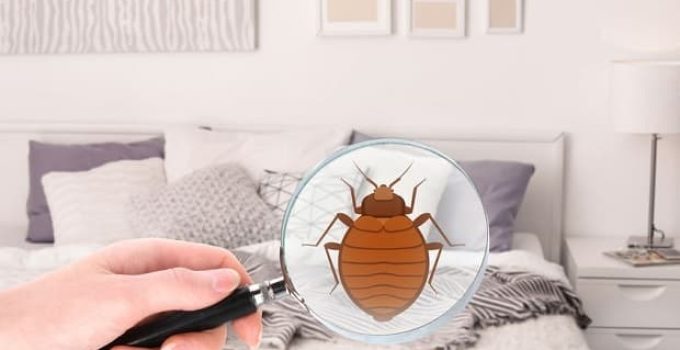Think you might have bed bugs? You’re not alone—and unfortunately, you’re probably not wrong. Bed bugs are elusive, nocturnal pests that hide in tiny cracks and crevices, making them hard to detect until the infestation is well underway.
So how do you find bed bugs in your home? It takes careful inspection, a sharp eye, and knowledge of their hiding spots. With a flashlight, patience, and a few tools, you can track down the evidence before these pests multiply.
Dive Deeper
- 🔎 What Are the Early Signs of Bed Bugs?
- 🛋️ Where Do Bed Bugs Hide During the Day?
- 🧰 How to Perform a Bed Bug Inspection
- 📊 Checklist: Top Hiding Spots in Your Home
- 🧼 What to Do if You Find Evidence
🔎 What Are the Early Signs of Bed Bugs?
Before you see the bugs themselves, you might notice signs that bed bugs have moved in:
- Small red bites on your skin, often in lines or clusters
- Rust-colored stains on sheets or mattress seams (dried blood or fecal spots)
- Tiny white eggs or shed skins in crevices or on fabric
- A musty, sweet odor (in severe infestations)
- Itchy welts that appear overnight
Since these signs can be subtle or misattributed (e.g., to mosquitoes or allergies), it’s important to look closer.
🛋️ Where Do Bed Bugs Hide During the Day?
Bed bugs are photophobic, meaning they avoid light. During the day, they squeeze into tight spaces near their food source—you.
Common daytime hiding spots include:
- Mattress seams and box spring folds
- Behind headboards and bed frames
- Cracks in wooden furniture
- Under baseboards, outlet covers, and wallpaper edges
- Inside couches, recliners, and other soft furniture
They often hide within 5–10 feet of where people sleep, but in heavy infestations, they can spread far beyond the bedroom.
🧰 How to Perform a Bed Bug Inspection
To do a basic home inspection for bed bugs, follow these steps:
- Gather tools: flashlight, credit card (or similar flat edge), gloves, magnifying glass, and vacuum.
- Inspect your bed: check mattress seams, tags, and zippers. Look under the box spring and along the frame.
- Remove bedding: inspect the undersides of sheets, pillowcases, and comforters.
- Check surrounding furniture: look in drawers, under chairs, and between cushions.
- Look up: check behind picture frames, under lamps, and even inside smoke detectors or electronics near the bed.
If you see live bugs (reddish-brown, apple-seed size) or eggs (white, poppy-seed size), it’s time to take action.
📊 Checklist: Top Hiding Spots in Your Home
Use this checklist during your search to ensure you’ve covered the most common bed bug zones:
| Location | What to Check |
|---|---|
| Mattress & box spring | Seams, edges, fabric folds, tags |
| Bed frame & headboard | Joints, screw holes, behind wall mounts |
| Nightstands & drawers | Inside corners, drawer undersides |
| Baseboards & wall edges | Cracks, loose wallpaper, outlets |
| Sofas & recliners | Cushion seams, underneath frames |
| Clothing & laundry | Inside drawers, laundry hampers |
| Curtains & blinds | Hems, folds, and pleated sections |
Even a small number of bugs can rapidly multiply, so thorough inspection is crucial.
🧼 What to Do if You Find Evidence
If you confirm or strongly suspect bed bugs:
- Don’t move your mattress or furniture—you may spread them.
- Use mattress encasements to trap any remaining bugs inside.
- Vacuum thoroughly, especially cracks and upholstery (dispose of bag immediately).
- Wash bedding and clothing on high heat, and dry for 30+ minutes.
- Contact a pest control professional, especially for chemical or heat treatment options.
DIY methods can be helpful in early stages, but professional intervention is often required for full eradication.
🎯 Final Thoughts
Finding bed bugs in your home takes patience, close inspection, and awareness of the subtle clues they leave behind. The earlier you catch them, the easier they are to eliminate. Use tools, stay vigilant, and take quick action to prevent a few hidden bugs from turning into a full-blown infestation.
📚 References
- Centers for Disease Control and Prevention. “Bed Bugs FAQs.” CDC, www.cdc.gov/parasites/bedbugs/faqs.html
- Environmental Protection Agency. “Bed Bug Information.” EPA, www.epa.gov/bedbugs
- University of Kentucky Entomology. “How to Find Bed Bugs.” www.entomology.ca.uky.edu/ef636
